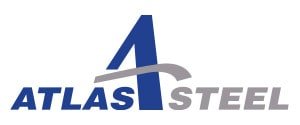Hot Vs. Cold Rolled Steel: What’s the Difference?
When choosing a steel for your next project, you might be asked: hot rolled steel, or cold rolled steel?
If you’re not already familiar with the differences between the two, then you may feel at a loss. What’s the difference between the two? And, does it really matter for your specific project? Well, that depends.
Today, we’re giving you a crash course in the difference between hot rolled and cold rolled steel coils.
What is Rolled Steel, Exactly?
The first thing you should know about rolled steel is that the “Hot” and “Cold” refer to how the steel is processed. Hot rolled steel is steel that was shaped at extremely high temperatures, generally above steel’s recrystallization point (more on that later). By contrast, cold rolled steel is steel that was shaped below steel’s recrystallization point. You should also know that “cold” rolled steel isn’t actually processed as a temperature we would find cold—it’s actually just processed at room temperature. It’s only “cold” compared to hot rolled steel, which is processed at 1700° F.
There’s one more key point to take away: while hot and cold rolled steel certainly have different qualities, one isn’t necessarily higher or lower quality than the other. They have different strengths for different situations.
Hot Rolled Steel: Affordable, Tough, Ductile
Hot rolled steel is the more common steel you’ll find thanks to its easy processing. You see, by bringing the steel up to intense temperatures such as 1700° F, its microscopic crystal structure becomes begins to reform, reducing the steel’s hardness and increasing its ductility. As a result, the steel becomes much easier to mold into steel coils.
The hot rolling process also gives steel unique traits. Hot rolled steel has enhanced ductility and toughness, while also has fewer internal stressors that cold rolled steel faces in the quenching (rapid cooling) process. As a drawback, hot rolled steel is also known to have slight distortions and a “flaky” appearance due to the imprecise crystalline makeup. In other words, it doesn’t look as pretty as cold rolled steel. Still, its variety of applications and easy processing make it a reliable, affordable option for most industrial needs.
Common applications for hot rolled steel are:
- Railroad tracks
- Structural supports for buildings
- Frames for cars, trucks, and other vehicles
- Large metal agricultural equipment
Cold Rolled Steel: Precision and Advanced Hardening
Cold rolled steel is generally more expensive than hot rolled steel due to its processing costs, but it also has much more precise applications.
Where hot rolled steel is best for invisible, industrial applications (such as the framing of our buildings), cold rolled steel is generally better for smaller-scale, everyday uses. See, cold rolled steel is both ~20% stronger than hot rolled steel and has a finished, smooth surface that makes it best for uses where form matters. Surgical steel, for instance, is often cold-rolled, since it’s absolutely essential that surgical equipment is both exactly to specifications and incredibly strong.
Some frequent uses for cold rolled steel are:
- Surgical tools
- Aerospace components
- Car and automotive parts
- Everyday appliances such as microwaves, TVs, and electronics
Get Steel Coils for Your Needs Today
Whether you need hot or cold rolled steel, Atlas Steel is the Midwest’s #1 provider of steel coils. Click here to contact us today for more information!





